By Corinna Kloth

A Compilation of Newly Released Indie Reads.
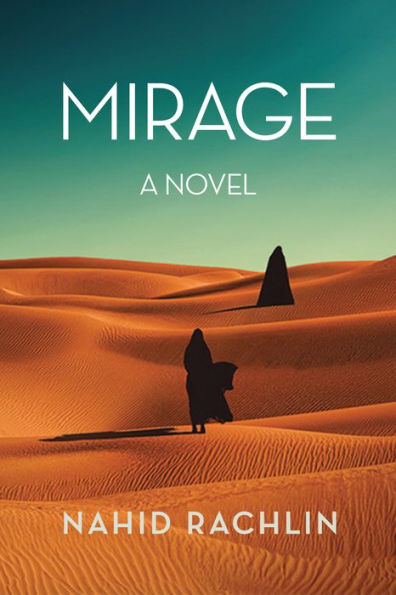
1. Mirage
Set in contemporary Iran, Mirage delves into the complicated relationship between Roya and her identical twin sister, Tala. Their inseparable bond becomes hard to maintain as they grow older, but when they both get pregnant at the same time, their relationship is rekindled. After an accident causes Roya to miscarry and Tala to go into labor, grief, jealousy, suspicion, and guilt fracture that recently renewed relationship. Delving deep into the human psyche, Nahid Rachlin intricately explores themes of sisterly identity, betrayal, envy, depression, loss, and the impact of memories. Like Ottessa Moshfegh’s Death in Her Hands (Penguin Press, 2020), Mirage artfully juxtaposes the sociopolitical dynamics of contemporary Iran with a story of the nature of grief and redemption that will take firm hold of your heart.
Nahid Rachlin went to Columbia University on a Doubleday-Columbia Fellowship and to Stanford University on a Wallace Stegner Fellowship. Her publications include a memoir, Persian Girls (Penguin); four novels, Jumping Over Fire (City Lights), Foreigner (W.W. Norton), Married to a Stranger (E.P. Dutton), Crowd of Sorrows; and a short story collection, Veils (City Lights). Her work has appeared in the New York Times, Newsday, The Washington Post, the LA Times, Solstice Literary Magazine, the Virginia Quarterly Review, Prairie Schooner, Southern Humanities Review, Redbook, and Shenandoah.
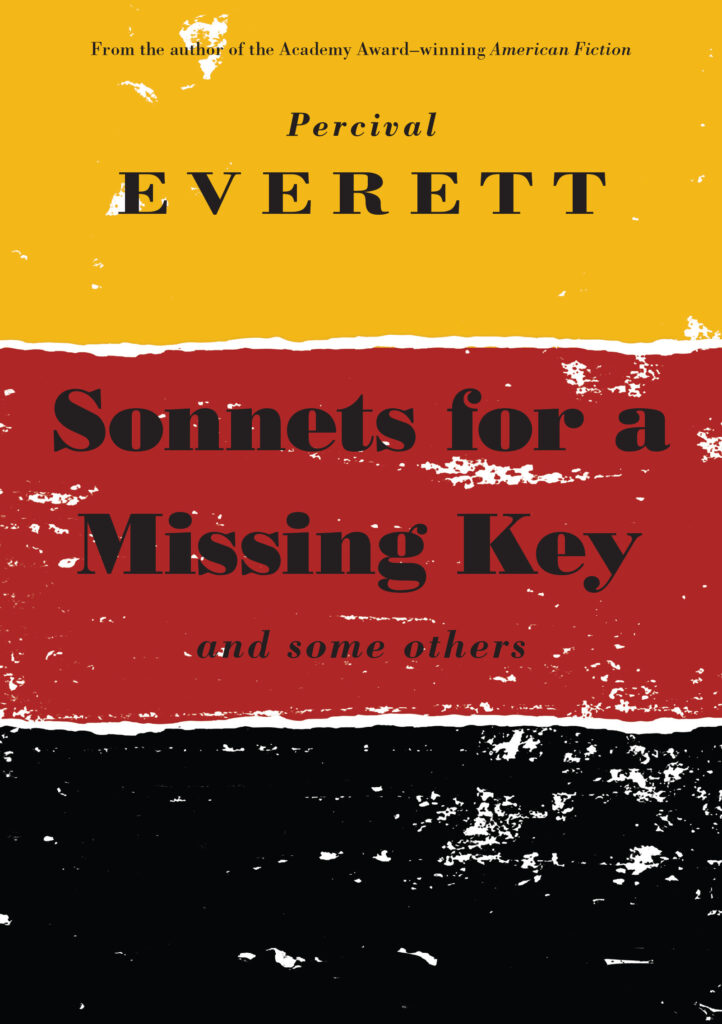
2. Sonnets for a Missing Key
These sonnets were inspired by the Preludes of Chopin.
Do keys matter? Do they speak to different parts of us? Inspired by the Preludes of Chopin and the piano solos of Art Tatum, these experimental sonnets seek to question timbre and tone. That’s bullshit. They are just sonnets.
ADVANCE PRAISE
“Percival Everett is a genre.”
—Kiese Laymon, author of Long Division and MacArthur Fellowship Grantee
Percival Everett is the author of more than thirty books of fiction and poetry. Among his works are James, The Trees, Erasure, and Dr. No. He has been awarded the PEN/Jean Stein Book Award, the Windham-Campbell Prize for Fiction, a Creative Capital Award, and a Guggenheim. He has been a finalist for the Pulitzer Prize, the Booker Prize, and the PEN/Faulkner Award. He is a Distinguished Professor of English at the University of Southern California.

3. Circle of Animals
When her hippie mother Edi goes missing the same week Sky Richard is assaulted at work—Sky wants to run away from everything. Instead, Sky goes looking for her mother and finds an estranged grandmother, the cult she was born in, and an unlikely ally. But the most important thing she discovers in her mother’s past is the strength she needs to face her own life.
Circle of Animals tells the story of a woman, Sky, grappling with a sexual assault in her workplace and the disappearance of her troubled “hippie” mother the same week. As she searches for and uncovers her mother’s story, she also discovers the larger story of the historically situated and gendered bodies of her mother and estranged grandmother. Drawing on ancient myth (the title refers to the zodiac), California counterculture of the last century, and current conversations about sexual violence, this novel asks us to think about how the inability to communicate violence done unto the body is not just a symptom but also a means through which violence spreads collaterally between women as silence and estrangement. As Sky looks for her mother, she must also find her own voice and courage to claim her agency.
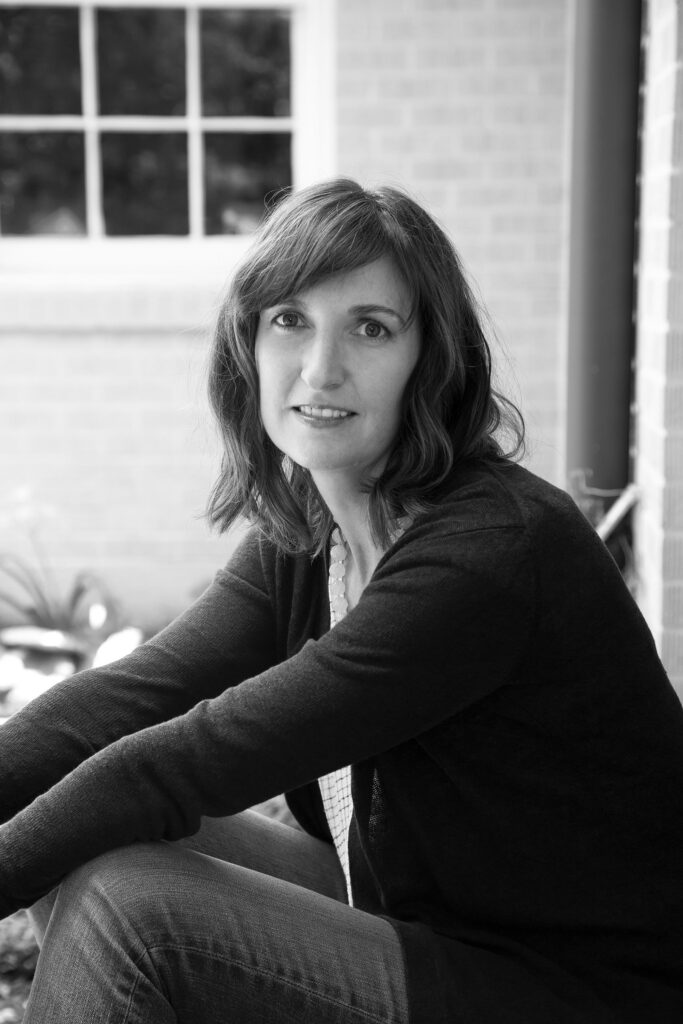
Sadie Hoagland has a PhD in fiction from the University of Utah and an MA in Creative Writing/Fiction from UC Davis. She is the author of American Grief in Four Stages, a short story collection published by West Virginia University Press. Her work has also appeared in the Alice Blue Review, The Black Herald, Mikrokosmos Journal, South Dakota Review, Sakura Review, Grist Journal, Oyez Review, Passages North, Five Points, The Fabulist, South Carolina Review and elsewhere. She is a former editor of Quarterly West and currently teaches fiction at the University of Louisiana at Lafayette.
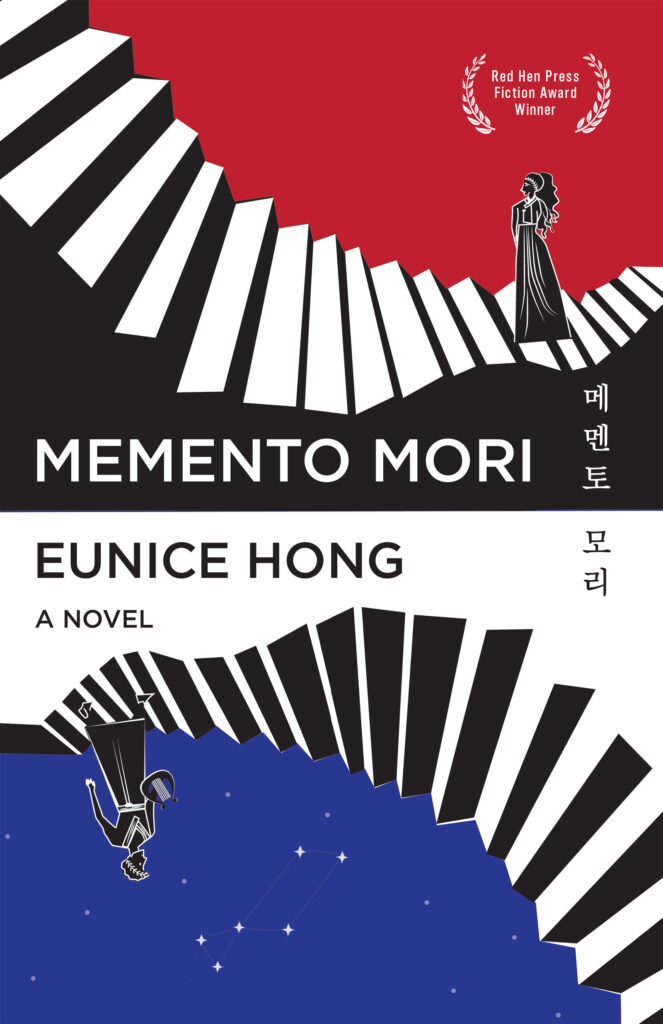
4. Memento Mori
Don’t look back.
Did Eurydice want to return from the underworld? Did anybody ask?
In this brilliant portrait of rage and resilience, a Korean woman tries to connect with her younger brother and grapple with family tragedy through bedtime stories that weave together Greek mythology, neuroscience, and tales from their grandmother’s slipping memory.
Recasting the myths of Eurydice, Orpheus, Persephone, and Hades through the lens of a Korean American family, Eunice Hong’s debut novel offers a moving and darkly funny exploration of grief, love, and the inescapability of death.
“A beautifully written and impressively candid meditation on family secrets and the ties that bind, the slipperiness of memory and family lore, and resilience and endurance found in even the unlikeliest of circumstances.”
—Helen Wan, author of The Partner Track
Eunice Hong
Eunice Hong is the director of the Leadership Initiative and a lecturer in law at Columbia Law School. She was previously a litigation associate at Paul, Weiss, Rifkind, Wharton & Garrison LLP and a law clerk to the Honorable Richard M. Berman in the United States District Court for the Southern District of New York. Eunice received her JD from Columbia Law School after graduating from Phillips Academy Andover and Brown University. She resides in New York, New York.
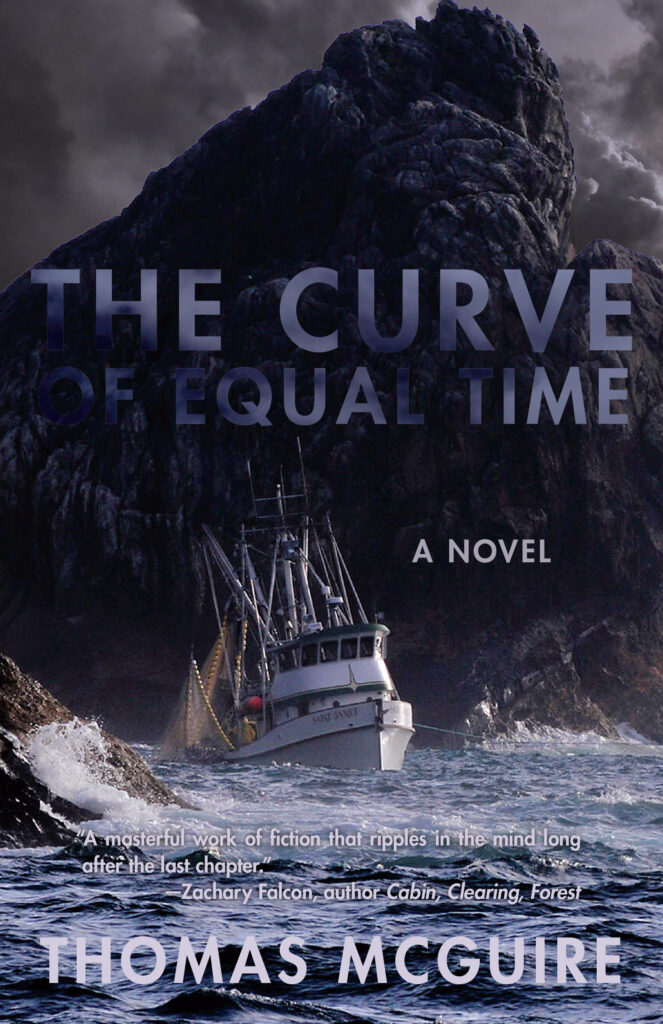
5. The Curve of Equal Time
Nora Tyler returns to Alaska after many years away and finds work on a salmon fishing boat, but the long, hard season brings both deep friendships and unexpected violence.
Nora Tyler returns to Alaska after twenty years in Seattle and finds work on the Lily Langtry, a purse seine fishing boat. Over the course of the long, hard season, Nora reawakens to the beauty of fishing for salmon on the outer coast. Her four crewmates have their own troubled pasts, and she forms a different bond with each one. A rivalry develops with another boat, the Viking Hero. When a woman is lost overboard from the Hero, Nora tries to understand what happened and finds that the Hero was dealing drugs and her crewmate Danny was part of the action. Toby’s ex-girlfriend, Sara, takes the place of the missing woman and finds herself in a difficult situation with no easy way out. At the end of the season, Nora and her crewmates go duck hunting on the Stikine River flats. Two of the Hero’s crew appear, perhaps not by chance, and the confrontation turns violent.
Thomas McGuire came to Alaska with two college friends. Fifty years later he still hasn’t found reason to leave. He has worked as a salmon fisherman, carpenter, and North Slope oilfield worker. He and his wife have raised four children in a house they built on the banks of the Chilkoot River. Grizzly bears are frequent visitors. Tom has also paddled thousands of miles down (and up) northern rivers. He has published a book, 99 Days on the Yukon, that describes a summerlong trip with legendary canoeist Charlie Wolf.
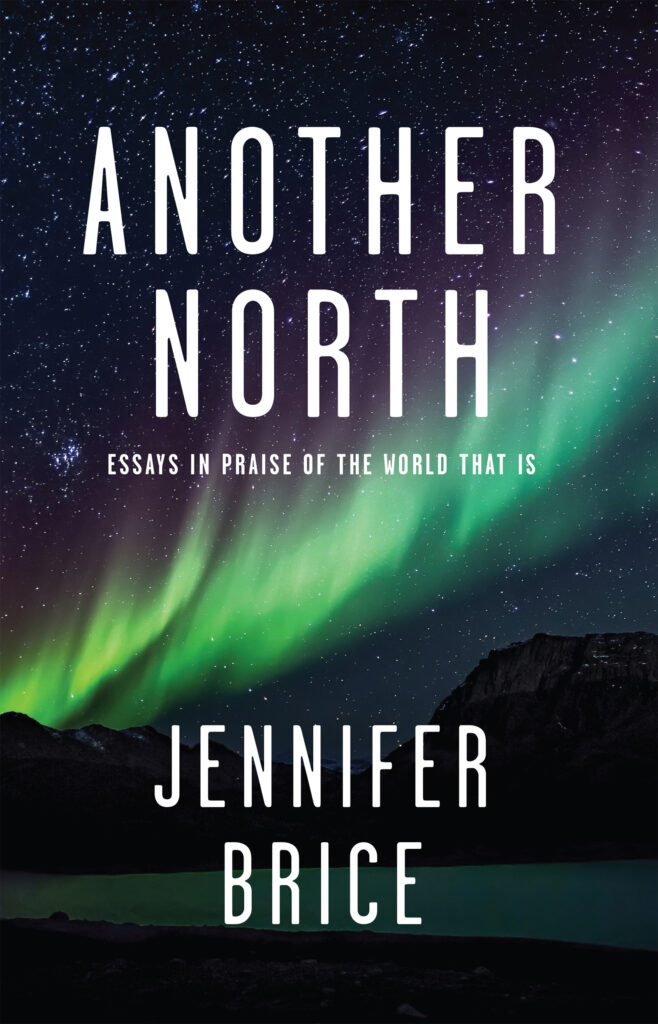
6. Another North
Another North is a paean to the material world—food, clothing, cars, and houses, of course, but also to wastrel beauty that serves no purpose but to catch at the human heart.
The pieces in this collection capture the feeling of being buffeted by great gusts of middle-aged longing. What began as one woman’s quarrel with Buddhism, especially its doctrine of non-attachment, morphs into a larger question: What’s the right way to love a person or a thing? With voluptuous detail and rigorous self-interrogation, Jennifer Brice looks for answers in family lore, personal experience, conversations with friends, and beloved books. The result is a tender, moving, far-reaching—sometimes delightfully funny, sometimes achingly poignant—exploration of the powerful ties that bind us to one another and to the world around us.
Jennifer Brice is the author of The Last Settlers, a work of documentary journalism, and Unlearning to Fly, a memoir. Another North is her first collection of essays. Born in Fairbanks, Alaska, she teaches contemporary literature and creative writing at Colgate University in upstate New York.
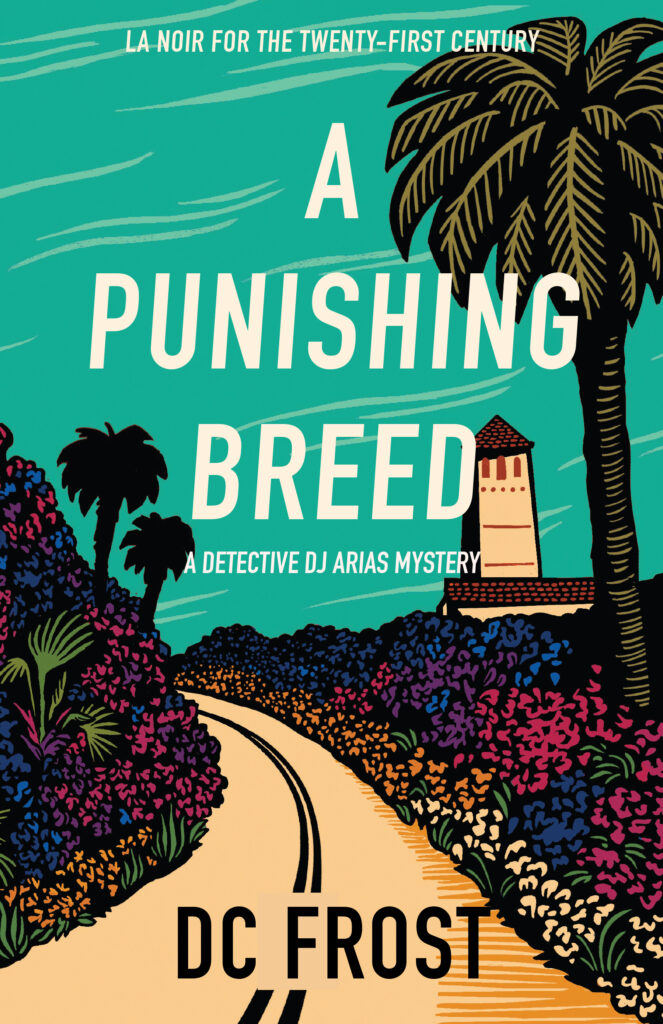
7. A Punishing Breed
A Punishing Breed, the first in a series of novels featuring Detective DJ Arias, is a murder mystery that takes place in Los Angeles, the city of angels, freeways, Santa Ana winds, and honeysuckle slithering through chain-link fences and perfuming LA’s dark streets and neighborhoods. Detective Arias hunts for a murderer on a liberal arts campus that prides itself on its progressive curriculum but is rife with jealousy, racial and sexual tensions, and a hierarchy as real and destructive as a medieval fortress. DJ Arias, good at his job because he sees the worst in people, is challenged by the college community, a neighborhood recluse, and a young Latino gardener he sent to jail ten years ago for a hit-and-run accident. Through the course of his investigation, Arias will find out no one is who they appear to be. He begins to reclaim his humanity by adopting a dog he names Evidence and finding the clues to a crime born from a dark secret not contained in the past but alive in the present, which will cast destruction and murder on the denizens of the small liberal arts campus.
DC Frost is a second-generation Angelino. For almost twenty years, she has worked at a small private liberal arts college in the heart of Los Angeles. DC loves and respects Southern California, a melting pot of class and culture that is often misrepresented and misunderstood in popular fiction and media. DC lives in Eagle Rock, California, with her husband, who is an NPR journalist and reporter, and three rescue dogs. DC and her husband have an adult son, a filmmaker, who resides in Los Angeles.

8. Carrion
Teach me to bury this.
Just as Odin’s ravens, named Huginn and Muninn (translated to Thought and Memory), would whisper everything he couldn’t see, so too do these and other mythical ravens—of Athena, the Biblical Eve and Noah, Coronis, and others—function in Jamison’s essay collection: they are tools to interpret and make meaning of their world, rent as it is between the rural and urban, the romantic and abusive, where language is both surfeit and dearth. This collection sees mythical ravens murmur alongside the actual bone and viscera of crows, starlings, and pigeons in disarming explorations of desire and destruction, the body and creation. Carrion is an ambitiously structured collection that honors the literary forebears at its center while lamenting our inability to communicate anything—love, need, hope—except in metaphors.
Wes Jamison is the author of and Melancholia (Essay Press, 2016), and is a noted author in Best American Essays. They earned an MFA in nonfiction from Columbia College Chicago and a PhD in English from the University of Louisiana at Lafayette. They currently teach at Del Mar College in Corpus Christi, TX.
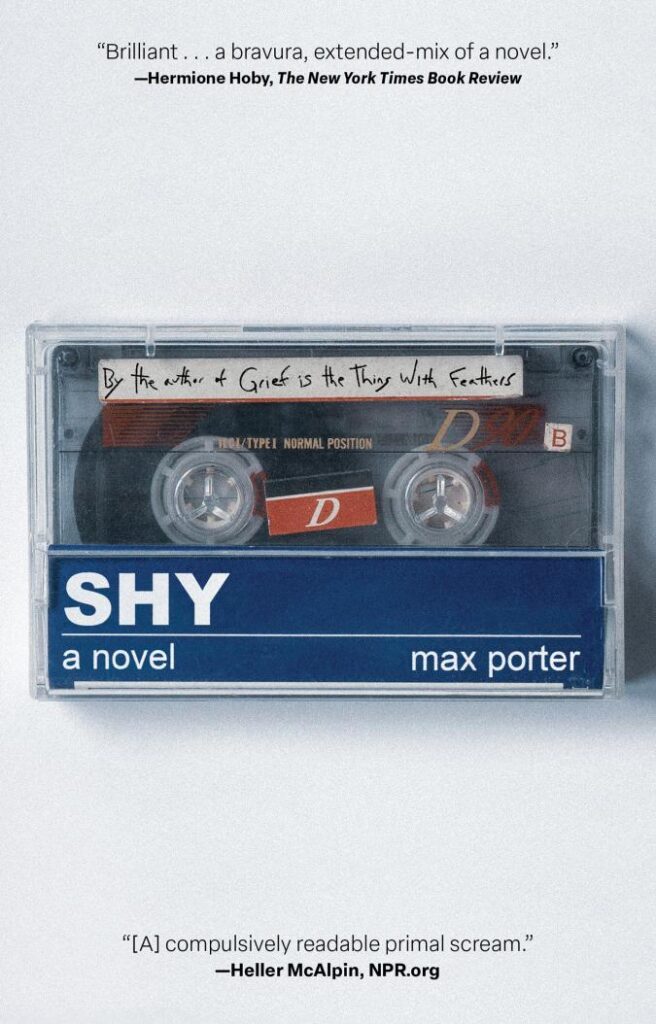
9. Shy
This is the story of a few strange hours in the life of a troubled teenage boy.
You mustn’t do that to yourself Shy. You mustn’t hurt yourself like that.
He is wandering into the night listening to the voices in his head: his teachers, his parents, the people he has hurt and the people who are trying to love him.
Got your special meds, nutcase?
He is escaping Last Chance, a home for “very disturbed young men,” and walking into the haunted space between his night terrors, his past, and the heavy question of his future.
The night is huge and it hurts.
Shy is a music-besotted literary performance that has had critics in awe of Porter’s “bravura, extended-mix of a novel that skitters, pulses, fractures and coalesces again with all the exhilaration and doom of broken beats and heavy bass lines” (Hermione Hoby, The New York Times Book Review).
Max Porter is the author of Lanny, which was longlisted for the Booker Prize, Grief Is the Thing with Feathers, winner of the International Dylan Thomas Prize, and The Death of Francis Bacon. He lives in Bath with his family.
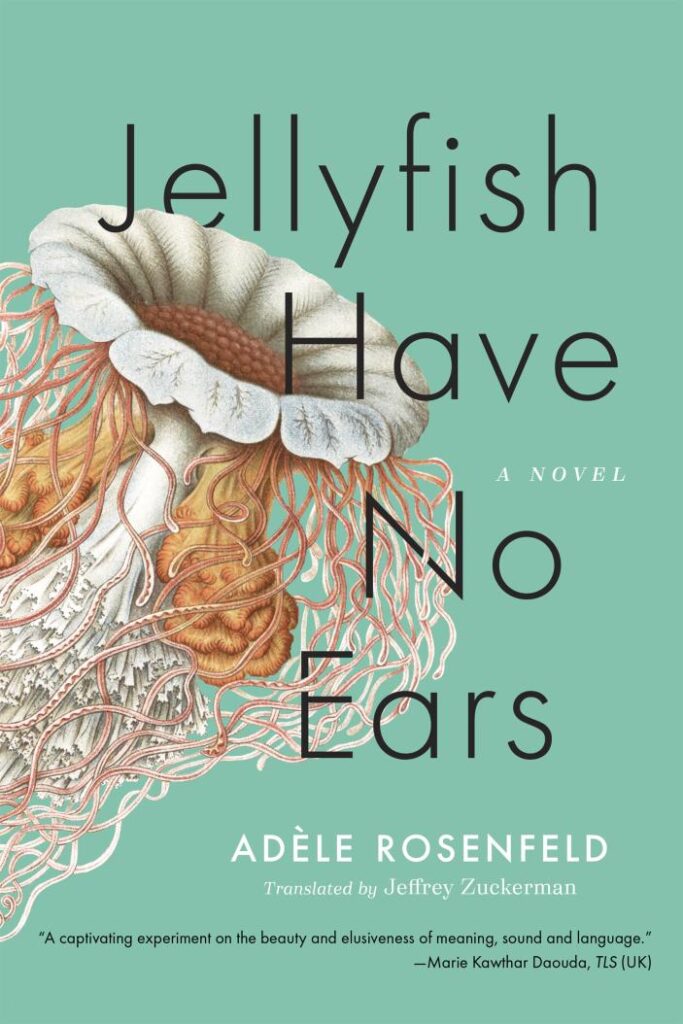
10. Jellyfish Have No Ears
Since she was little, Louise has been not quite hearing and not quite deaf—her life with this invisible disability has been one of in-betweenness. After an audiology test shows that almost all her hearing is gone, her doctor suggests getting a cochlear implant. The operation will be irreversible, making the decision all the more fraught. The technology would give Louise a new sense of hearing—but it would be at the expense of her natural hearing, which, for all its weakness, has shaped her unique relationship with the world, full of whispers and shadows.
Hearing, for Louise, is inseparable from reading other people’s lips. Through sight, she perceives words and strings them together like pearls to reconstruct a conversation. But when the string breaks, misunderstandings result and eccentric images fill her thoughts. As she weighs the prospect of surgery, fabulous characters begin to accompany her: a damaged soldier from the First World War, an irritable dog named Cirrus, and a whimsical botanist. This ethereal world, full of terror and beauty and off-kilter humor, keeps erupting into the equally chaotic reality of Louise’s life as she experiences a new relationship, suffers through her first job, and steadies herself with friends.
Adèle Rosenfeld lives in Paris where she runs writing workshops. Jellyfish Have No Ears was a finalist for the 2023 Prix Goncourt for a first novel.
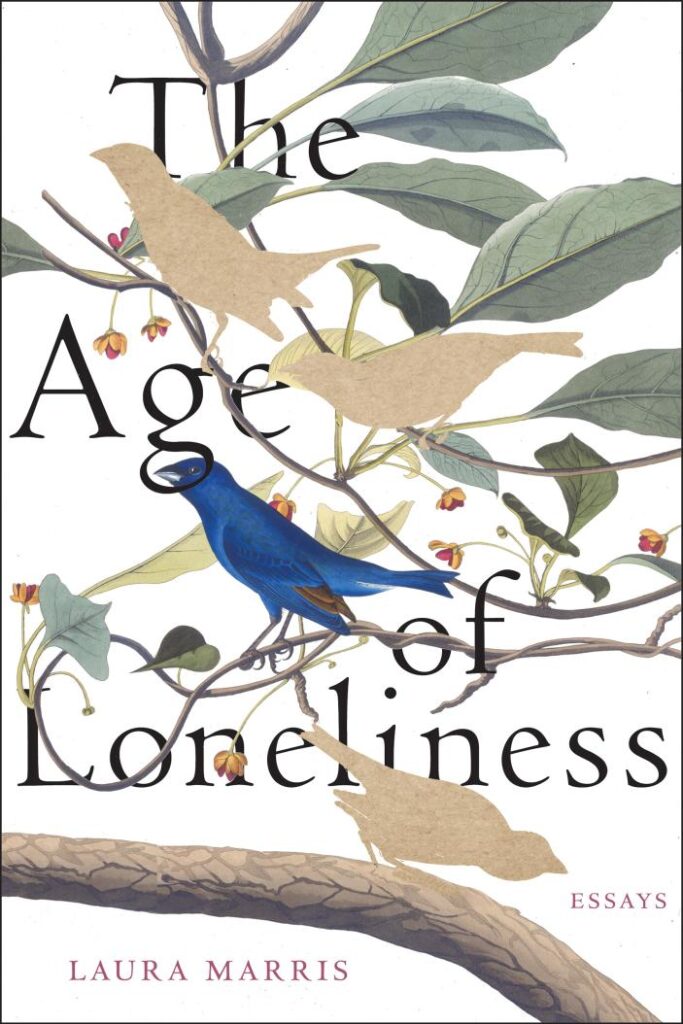
11. The Age of Loneliness
In this debut essay collection, Laura Marris reframes environmental degradation by setting aside the conventional, catastrophic framework of the Anthropocene in favor of that of the Eremocene, the age of loneliness, marked by the dramatic thinning of wildlife populations and by isolation between and among species. She asks: How do we add to archives of ecological memory? How can we notice and document what’s missing in the landscapes closest to us?
Filled with equal parts alienation and wonder, each essay immerses readers in a different strange landscape of the Eremocene. Among them are the Buffalo airport with its snowy owls and the purgatories of commuter flights, layovers, and long-distance relationships; a life-size model city built solely for self-driving cars; the coasts of New England and the ever-evolving relationship between humans and horseshoe crabs; and the Connecticut woods Marris revisits for the first time after her father’s death, where she participates in the annual Christmas Bird Count and encounters presence and absence in turn.
Vivid, keenly observed, and driven by a lively and lyrical voice, The Age of Loneliness is a moving examination of the dangers of loneliness, the surprising histories of ecological loss, and the ways that community science—which relies on the embodied evidence of “ground truth”—can help us recognize, and maybe even recover, what we’ve learned to live without.
Laura Marris (Photography Credit: Pat Cray) is a writer and translator. She is a MacDowell fellow and the recipient of a Silvers Grant for Work in Progress. She teaches creative writing at the University of Buffalo.
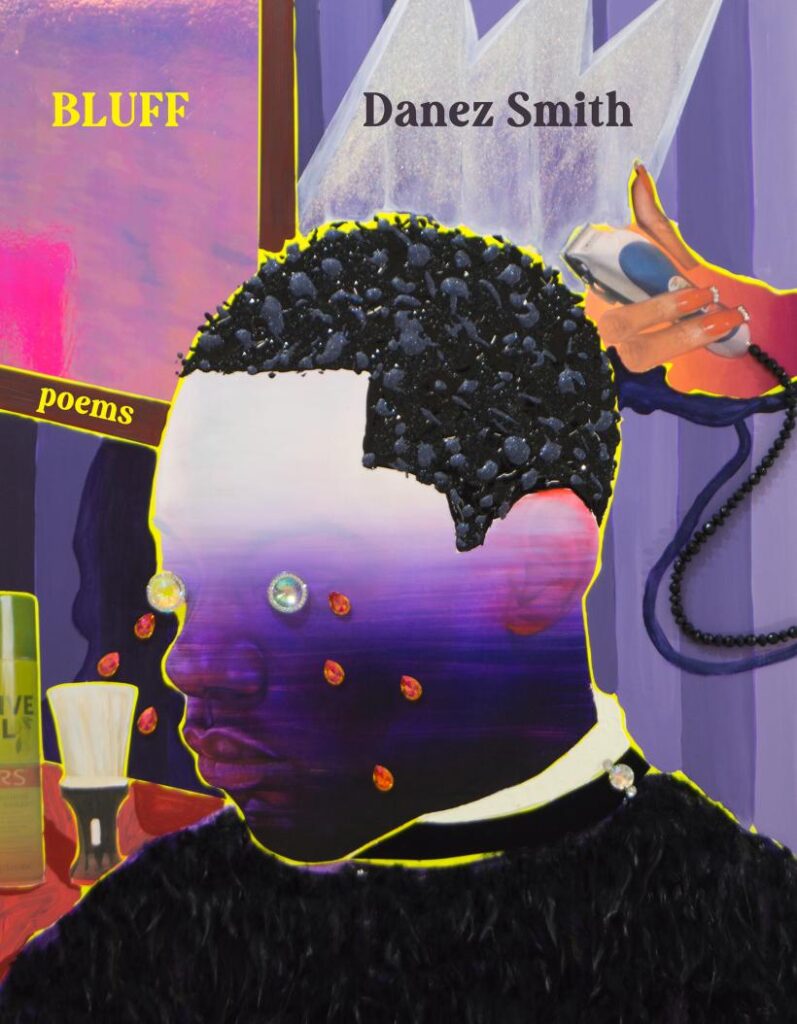
12. Bluff
Written after two years of artistic silence, during which the world came to a halt due to the COVID-19 pandemic and Minneapolis became the epicenter of protest following the murder of George Floyd, Bluff is Danez Smith’s powerful reckoning with their role and responsibility as a poet and with their hometown of the Twin Cities. This is a book of awakening out of violence, guilt, shame, and critical pessimism to wonder and imagine how we can strive toward a new existence in a world that seems to be dissolving into desolate futures.
Smith brings a startling urgency to these poems, their questions demanding a new language, a deep self-scrutiny, and virtuosic textual shapes. A series of ars poetica gives way to “anti poetica” and “ars america” to implicate poetry’s collusions with unchecked capitalism. A photographic collage accrues across a sequence to make clear the consequences of America’s acceptance of mass shootings. A brilliant long poem—part map, part annotation, part visual argument—offers the history of Saint Paul’s vibrant Rondo neighborhood before and after officials decided to run an interstate directly through it.
Bluff is a kind of manifesto about artistic resilience, even when time and will can seem fleeting, when the places we most love—those given and made—are burning. In this soaring collection, Smith turns to honesty, hope, rage, and imagination to envision futures that seem possible.
Danez Smith is the author of Don’t Call Us Dead, winner of the Forward Prize for Best Collection and a finalist for the National Book Award, and [insert] boy, winner of the Kate Tufts Discovery Award. They live in Minneapolis.
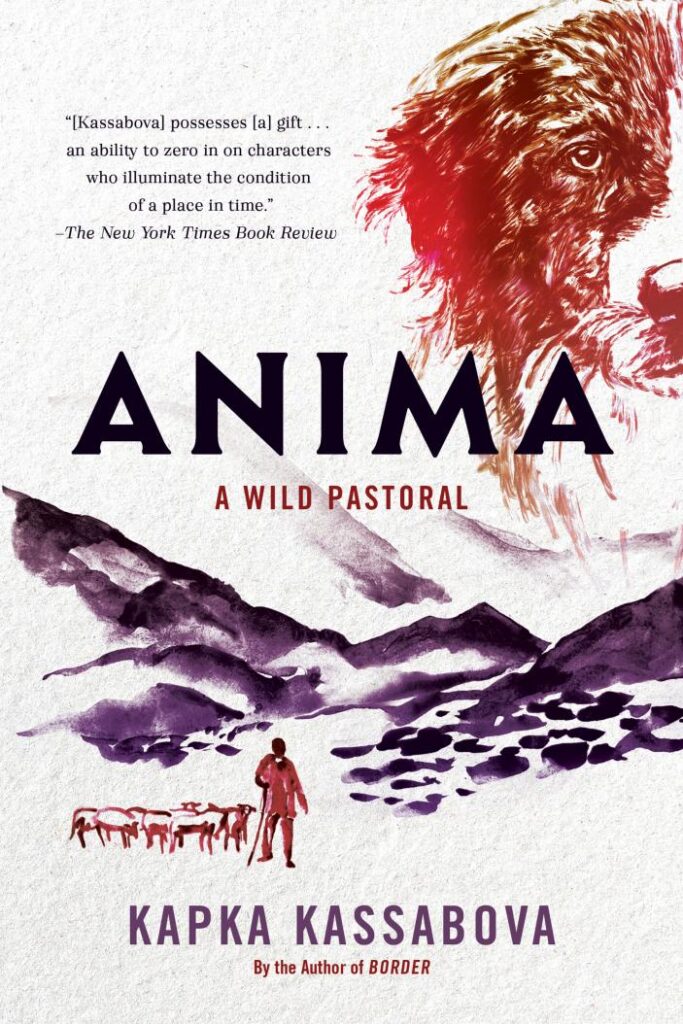
13. Anima
In Anima, Kapka Kassabova introduces us to the “pastiri” people—the shepherds struggling to hold on to an ancient way of life in which humans and animals exist in profound interdependence. Following her three previous books set in the Balkans, and with an increasing interest in the degraded state of our planet and culture, Kassabova reaches further into the spirit of place than she ever has before. In this extraordinary portrayal of pastoral life, she investigates the heroic efforts to sustain the oldest surviving breeds of our domesticated animals, and she shows us the epic, orchestrated activity of transhumance—the seasonal movement, on foot, of a vast herd of sheep, working in tandem with dogs. She also becomes more and more attuned to the isolation and sacrifices inherent in the lives shaped by this work.
Weaving together lyrical writing about place with a sweeping sense of the traumatic histories that have shaped this mountainous region of Bulgaria, Kassabova shows how environmental change and industrial capitalism are endangering older, sustainable ways of living, and by extension she reveals the limited nature of so much of modern life. But shining through Kassabova’s passionate, intimate response to the monoculture that is “Anthropos” is her indelible portrait of a circulating interdependence of people and animals that might point to a healthier way to live.
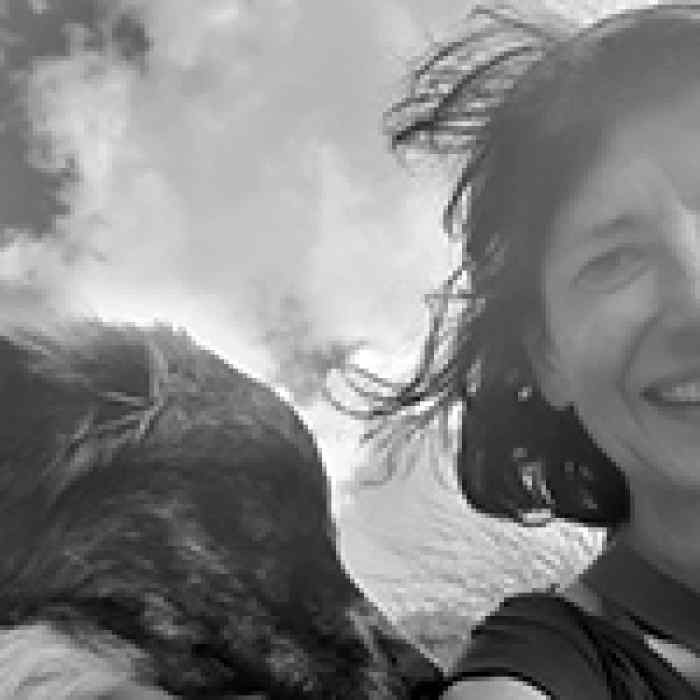
Kapka Kassabova is a writer of narrative nonfiction, poetry, and fiction. She grew up in Sofia, Bulgaria, and lives in the Scottish Highlands. She is the author of Elixir, To the Lake, and Border, a finalist for the National Book Critics Circle Award.
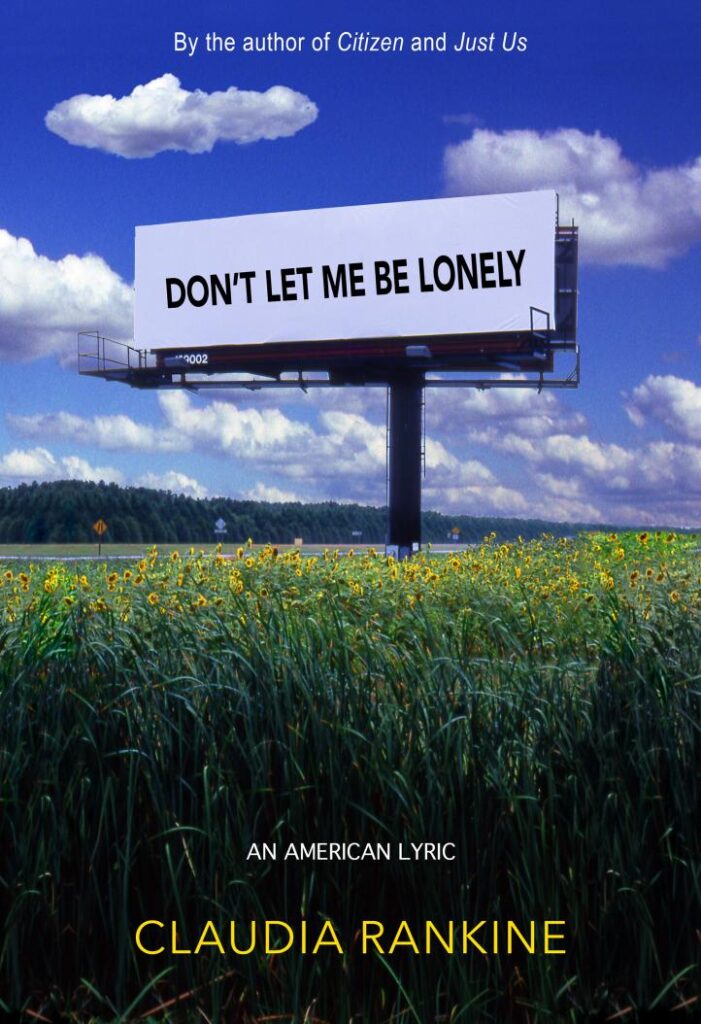
14. Don’t Let Me Be Lonely
A brilliant and unsparing examination of America in the early twenty-first century, Claudia Rankine’s Don’t Let Me Be Lonely invents a new genre to confront the particular loneliness and rapacious assault on selfhood that our media have inflicted upon our lives. Fusing the lyric, the essay, and the visual, Rankine negotiates the enduring anxieties of medicated depression, race riots, divisive elections, terrorist attacks, and ongoing wars—doom scrolling through the daily news feeds that keep us glued to our screens and that have come to define our age.
First published in 2004, Don’t Let Me Be Lonely is a hauntingly prescient work, one that has secured a permanent place in American literature. This new edition is presented in full color with updated visuals and text, including a new preface by the author, and matches the composition of Rankine’s best-selling and award-winning Citizen and Just Us as the first book in her acclaimed American trilogy.
Don’t Let Me Be Lonely is a crucial guide to surviving a fractured and fracturing American consciousness—a book of rare and vital honesty, complexity, and presence.
Claudia Rankine is the author of Just Us: An American Conversation, Citizen: An American Lyric and four previous books, including Don’t Let Me Be Lonely: An American Lyric. Her work has appeared recently in the Guardian, the New York Times Book Review, the New York Times Magazine, and the Washington Post. She is a chancellor of the Academy of American Poets, the winner of the 2014 Jackson Poetry Prize, and a contributing editor of Poets & Writers.
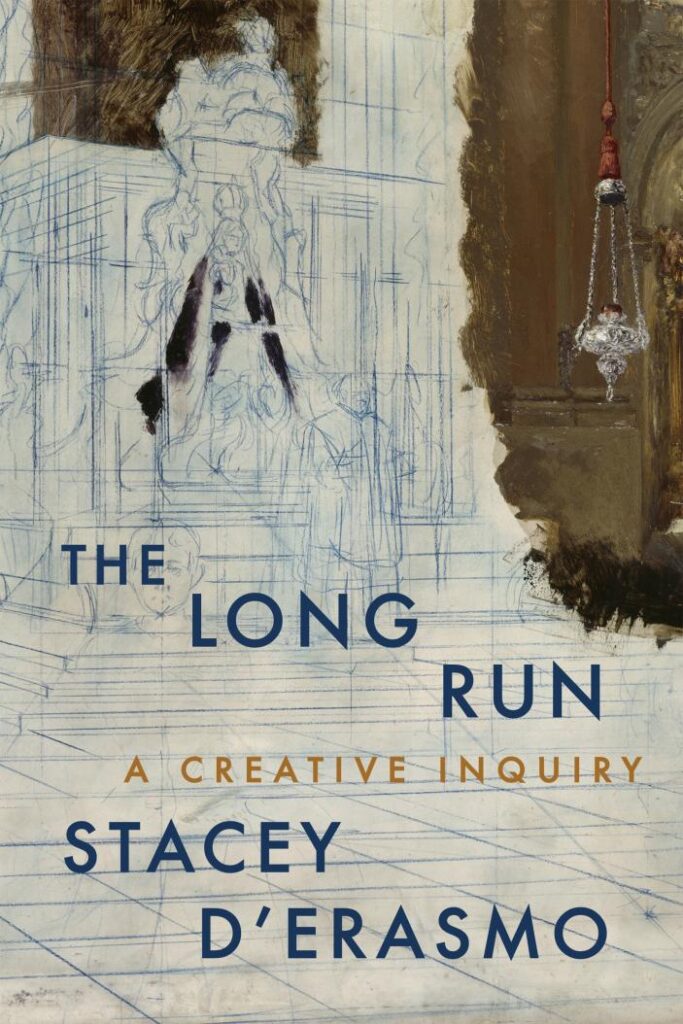
14. The Long Run
How do we keep doing this—making art? Stacey D’Erasmo had been writing for twenty years and had published three novels when she asked herself this question. She was past the rush of her first books and wondering what to expect—how to stay alive in her vocation—in the decades ahead.
D’Erasmo began to interview older artists she admired to find out how they’d done it. She talked to Valda Setterfield about her sixty-year career that took her from the Merce Cunningham Dance Company to theatrical collaborations with her husband to roles in films. She talked to Samuel R. Delany about his vast oeuvre of books in many genres. She talked to Amy Sillman about working between painting and other media, and between abstraction and figuration. She talked to landscape architect Darrel Morrison, composer Tania Léon, actress Blair Brown, musician Steve Earle, and visual artist Cecilia Vicuña. She saw connections between them and to artists across time: Colette, David Bowie, Ruth Asawa. She found insights, too, about what has driven and thwarted and shaped her as a writer.
Instead of easy answers or a road map, The Long Run offers one practitioner’s conversations, anecdotes, confidences, and observations about sustaining a creative life. Along the way, it radically redefines artistic success—shifting the focus from novelty, output, and external recognition toward freedom, fluidity, resistance, community, resilience, and longevity.
Stacey D’Erasmo is the author of the novels Tea, A Seahorse Year, The Sky Below, Wonderland, and The Complicities, and the nonfiction book The Art of Intimacy. She is a professor of writing and publishing practices at Fordham University.
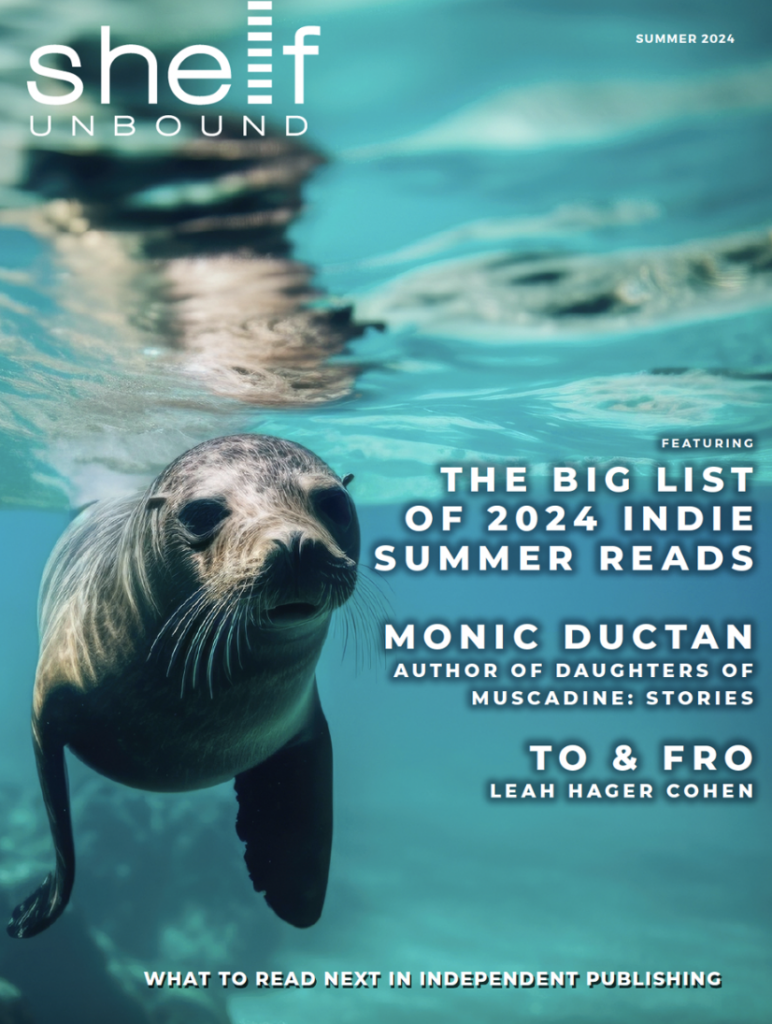
Continue Reading:
Article originally Published in the Summer 2024 Issue: Indie Summer Reads.
